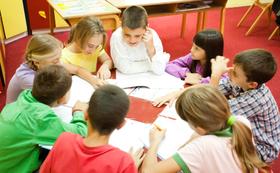Quick Facts (2025-26)
- School Type: Alternative school
- Grades: 9-12
- Source: National Center for Education Statistics (NCES), NJ Dept. of Education
School Overview
School Type
Grades Offered
Grades 9-12
(No virtual instruction)
(No virtual instruction)
Total Students
10 students
Total Classroom Teachers (11-12)
3 teachers
School Rankings
Student-Teacher Ratio
n/a
11:1
American Indian
(21-22)n/a
n/a
Asian
(21-22)n/a
10%
Hispanic
(21-22)20%
32%
Black
(21-22)80%
15%
White
(21-22)n/a
40%
Hawaiian
(21-22)n/a
n/a
Two or more races
(21-22)n/a
3%
Eligible for Free Lunch (21-22)
70%
30%
School Statewide Testing
School District Name
Source: National Center for Education Statistics (NCES), NJ Dept. of Education
Frequently Asked Questions
How many students attend Essex Rch?
10 students attend Essex Rch.
What is the racial composition of the student body?
80% of Essex Rch students are Black, and 20% of students are Hispanic.
What grades does Essex Rch offer ?
Essex Rch offers enrollment in grades 9-12 (No virtual instruction).
What school district is Essex Rch part of?
Essex Rch is part of Office Of Education Juvenile Justice Commission School District.
In what neighborhood is Essex Rch located?
Essex Rch is located in the Lower Roseville neighborhood of Newark, NJ. There are 3 other public schools located in Lower Roseville.
School Reviews
Review Essex Rch. Reviews should be a few sentences in length. Please include any comments on:
- Quality of academic programs, teachers, and facilities
- Availability of music, art, sports and other extracurricular activities
Recent Articles

Texas Schools Enrollment Trends & Policy in 2025
Latest data and policy changes on Texas public school enrollment growth, funding, and virtual education in 2025.

Financial Aid & Hidden Costs in ║┌┴¤═°╣┘═° Schools
Learn about financial aid and hidden costs in public schools. Discover what parents should budget for beyond tuition-free education.

NYC Schools Still Most Segregated in 2025
Despite reforms, New York City schools remain the most segregated in the U.S. in 2025. HereÔÇÖs what parents and educators need to know.





